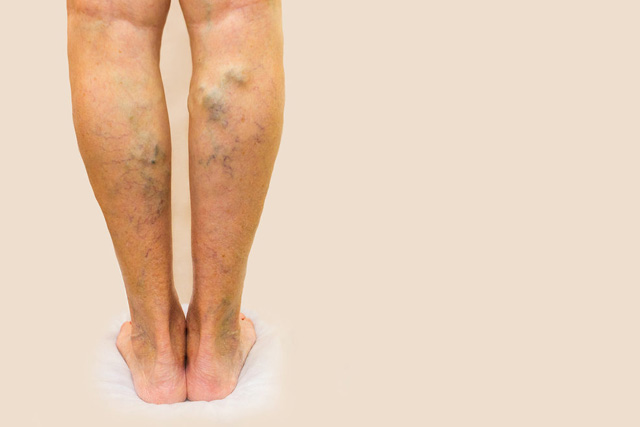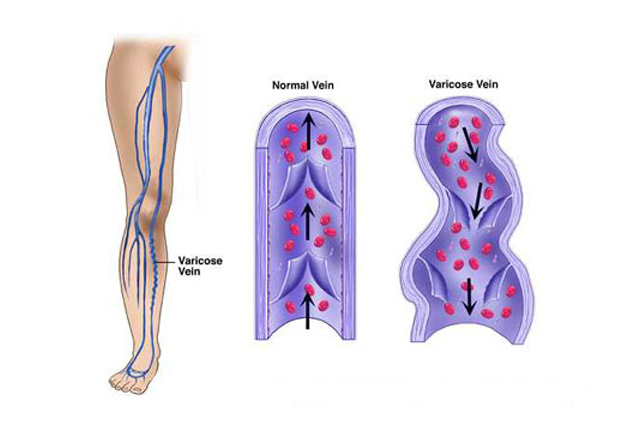Did you know about half of the U.S. population has venous disease? Venous disease tends to affect women more with 50-55% being women and 40-45% being male.
Varicose veins, a type of venous disease, disproportionately affects women. Spider veins are another common type of venous disease.
While those statistics might be set against many of us, there are ways you can help prevent or put off venous disease.
Causes of Venous Diseases:
Let’s start with the basics. Your body has two main types of blood vessels – arteries and veins. The arteries transport oxygenated blood away from the heart to the rest of the body. Once your body’s muscles and tissues have received their oxygen, the blood travels back up the body through your veins to be re-oxygenated. Veins have a harder job than arteries because they’re working against the force of gravity, especially the veins in our legs.
Doctors often call venous diseases venous insufficiency. The insufficiency refers to the veins’ inability to transport blood back up the legs to the heart. As a result, the blood pools in the legs which can lead to varicose veins.
Many factors can contribute to venous insufficiency including:
- High blood pressure
- Older age
- Being female
- Being overweight
- Not exercising regularly
- Have deep vein thrombosis
- Smoke
- Or have varicose veins in your family history
You can click here to learn more on the causes of vein disease.
How Can I Tell If I Have a Venous Disease?
Unfortunately, many people check one or more of the criteria above. Older women who are slightly overweight have a reasonably high chance of getting varicose veins.
You can identify venous disease by some of these symptoms:
- Swelling of the feet or ankles
- Itching
- Skin sores or ulcers
- Aching or heavy lower legs and feet
- Changes in skin color
- Cramping
If you think you’re experiencing problems with your veins, you should consult your doctor who can formally diagnose you. He will examine your legs with a type of ultrasound machine to see how well the blood flows in your legs. From there, he will recommend a course of action based on your results and discomfort.
How Can I Treat Venous Diseases?
There are a few things you can do to treat your venous disease. Most doctors will recommend that you wear compression stockings or socks to ease your discomfort. The compression action helps blood travel back up the leg. You don’t need a prescription to get compression socks, and you can find them at most drug stores or online retailers.
You should also get more exercise if you’re relatively inactive. Brisk walks, toe raises, and leg stretches are all great ways to activate your leg muscles if you’re not able to be super active. Running and other sports requiring running are also great options if you prefer a more athletic approach.
Also, try to avoid sitting or standing for long periods of time. Doing so can cause blood to pool in your legs. Getting up to stretch your muscles is particularly crucial during flights where we feel like we must be trapped in our seats for ages. Here are some stretches you can do on an airplane that won’t make you look crazy.
In some extreme cases, your doctor might recommend surgery to repair, remove, or circumvent non-functional veins.
What About Prevention?
Preventative measures in medicine are the most efficient and low-cost option in the long run. Many of the treatments we mentioned above are also perfect for preventing developing venous diseases.
Avoid sitting or standing for long periods of time. At work, try getting your hands on an adjustable standing desk that will allow you to go from standing to sitting whenever you want. When you stand, do toe raises and calf stretches every now and again to keep the muscles strong.
You should also quit smoking if you’re a smoker.
If you are obese or overweight, adopting a regular exercise routine and healthy diet can help reduce your risk for venous diseases.
Whether you end up with a venous disease later in life or not, know that treatments get better every year and that the different venous disorders are entirely manageable. However, the best way to prevent them altogether is to maintain a healthy weight, be active, and eat right.


